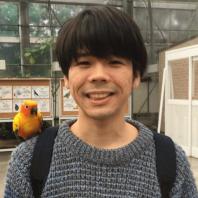![]()
![]()
Research Support Office Research Advancement Division. Tokyo University of Agriculture and Technology
| TEL | +81-42-367-5944 |
|---|---|
| FAX | +81-42-367-5946 |
This program is supported by MEXT’s scientific technology human resource development fee grant, "Program to Disseminate Tenure Tracking System".
Home > Introduction of our tenure-track faculties > Yokoyama Hikaru

Yokoyama Hikaru

| Research experience | ・Apr.2018-Mar.2021: JSPS research fellow (PD) |
|---|---|
| Educational background | ・March 2013 ・March 2015 ・March 2018 |
| Awards | ・March 2018, Outstanding Doctoral Dissertation Award, Department of Life Sciences, Graduate School of Arts and Sciences, University of Tokyo. |
| Selected papers and publications | ・Yokoyama, H., Sasaki, A., Kaneko, N., Saito, A., & Nakazawa, K. (2021). Robust identification of motor unit discharges from high-density surface EMG in dynamic muscle contractions of the tibialis anterior. IEEE Access, 9, 123901-123911. |
Walking is one of the most familiar and important physical activities for us. There are more than 400 skeletal muscles in our body. Highly coordinated activities of the muscles are required to achieve a stable walking without falling. Although the muscle activities are highly complex, we can walk without being particularly conscious of our movement. This is related to the fact that walking is an essential movement for many species, including humans, and the neural circuits to automatically generates walking movement patterns have been acquired and preserved in the human nervous system during evolution. Traditionally, evidence of neural control of walking have been revealed in animal studies. However, humans have a unique gait pattern, a bipedal upright gait, and the neural control pattern of this gait is different from that of other animals.
Therefore, I have been studying the neural control mechanisms of human walking using non-invasive neural recordings such as electroencephalography and electromyography. In particular, I have focused on the involvement of the cerebral cortex in walking control, which is a unique characteristic of human bipedal upright walking. Recently, we have also been conducted studies on neuromuscular control mechanisms at the level of single motor neurons using high-density surface EMG, the pathophysiology of gait disorders in spinal cord injury patients and Parkinson's disease patients, and decoding motor information of walking from EEG for future engineering applications (Figure 1 [overall view of research]).
First of all, I was surprised at the very young age of the tenure-track associate professors who were hired at the same time, including myself. I think that the tenure-track program of TUAT, which gives young researchers a valuable opportunity to manage their own laboratories, is a program that could make a great contribution to the scientific community in terms of fostering future researchers. I feel that the TUAT tenure-track program is a very favorable environment for young researchers to establish and run their own independent laboratories with the support of mentor faculty members and start-up funds. Researchers around me also mentioned that the tenure-track researchers at TUAT are very fortunate and provided with a wonderful environment in which they can concentrate on their research.
I will focus on setting up my laboratory and preparing the research environment. During the tenure-track period, I will be able to concentrate on my research activities as much as I want. Up to now, I have mainly conducted physiological research, but now that I belong to the Institute of Engineering, I would like to conduct research aiming at applying my research to the rehabilitation of walking. In addition, there are excellent researchers at TUAT who specialize in robotics and information science and conduct research related to human movement, so I would be happy to conduct joint research with them.